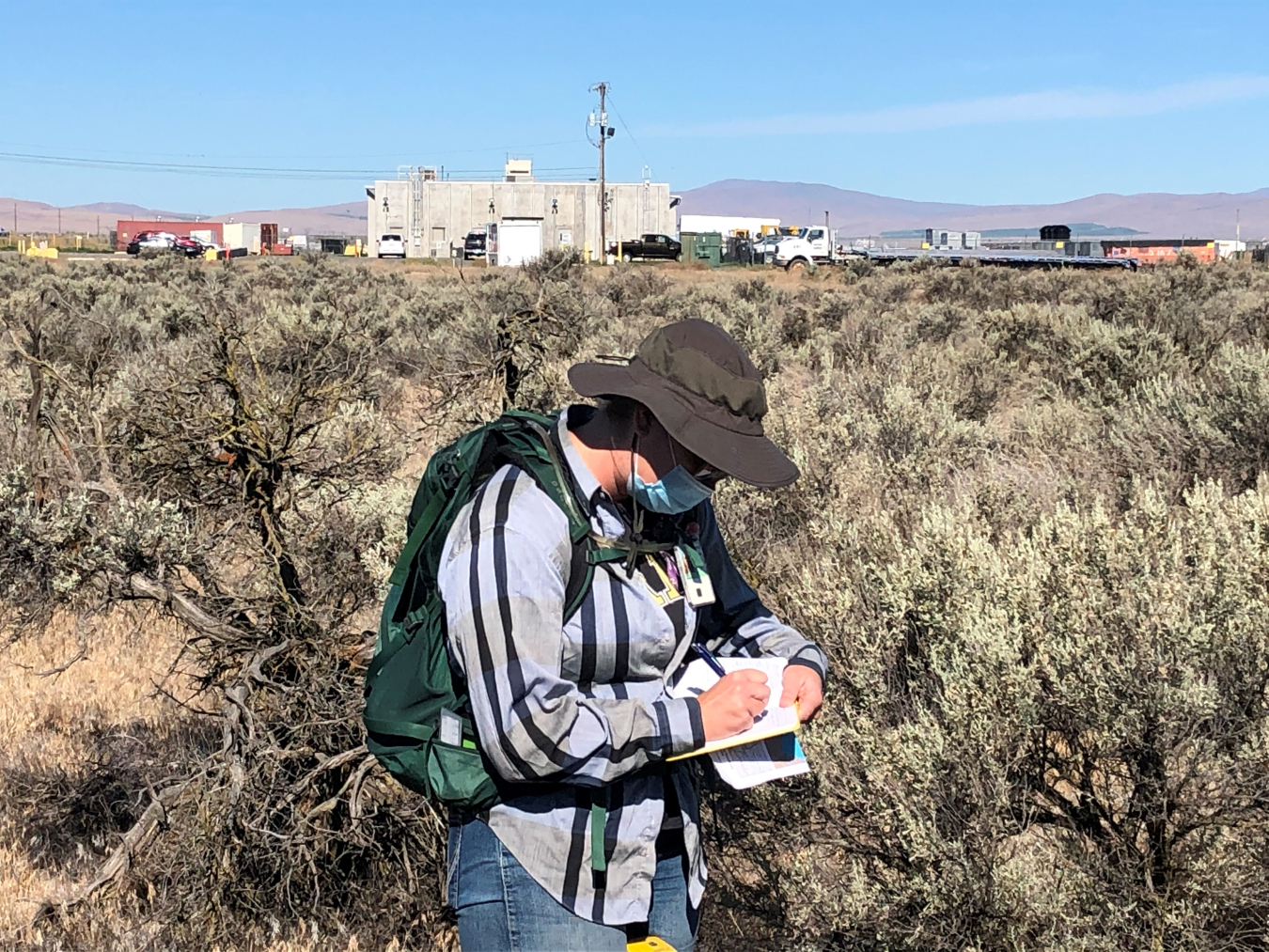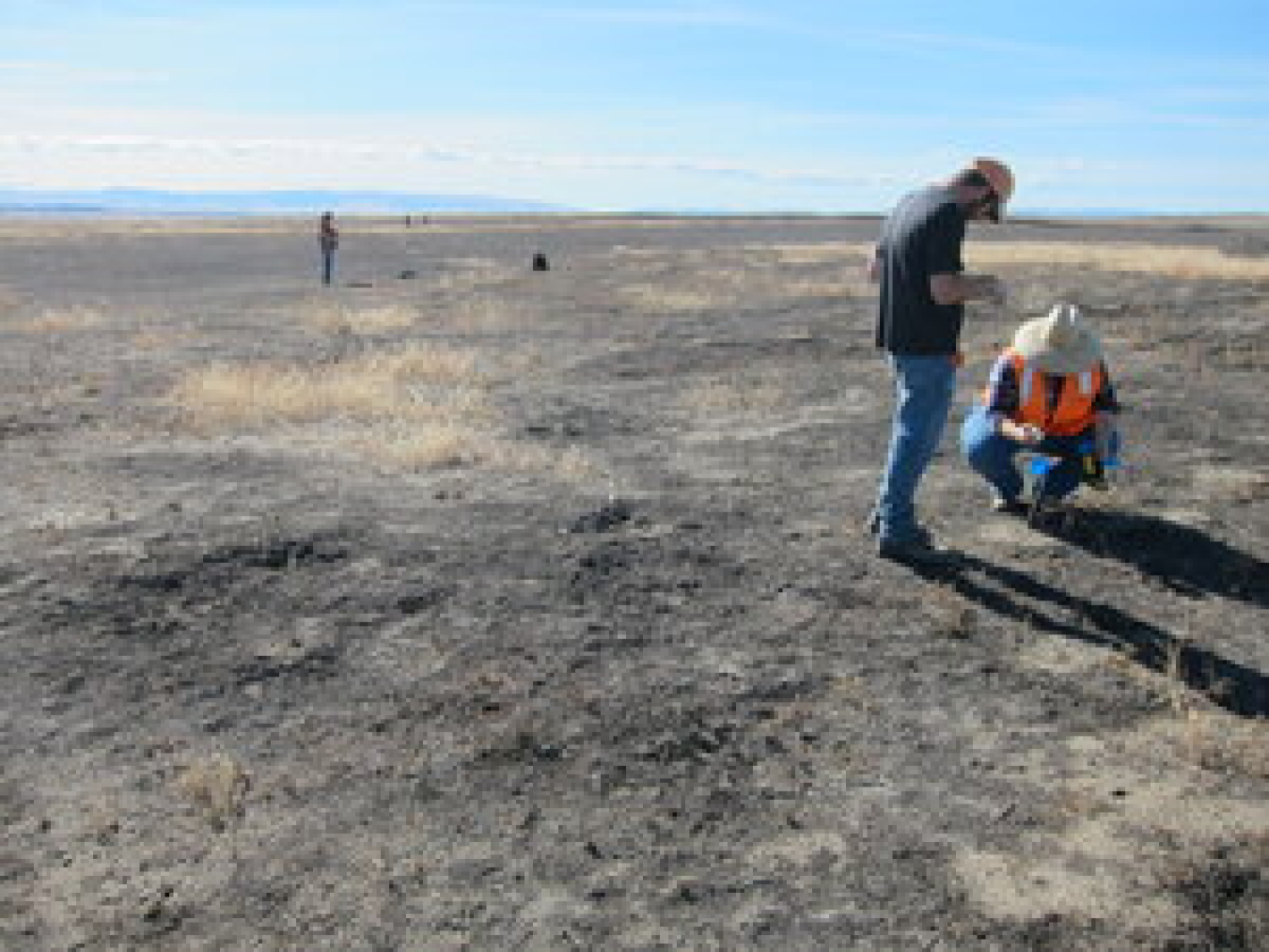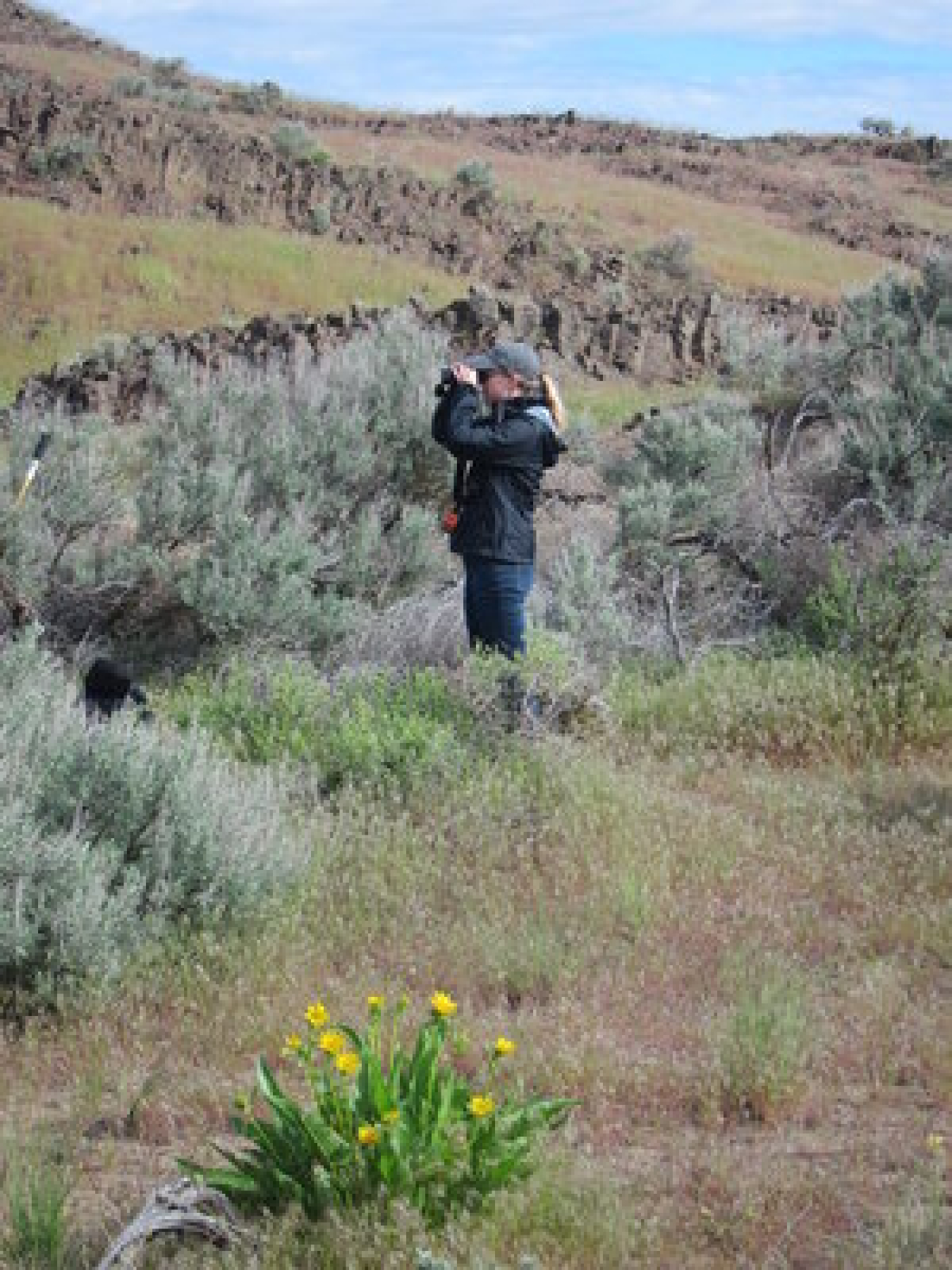The Hanford Site’s distinct history and ecosystem are positioned to stand the test of time thanks to the preservation and conservation efforts.
Office of Environmental Management
September 15, 2020
RICHLAND, Wash. – The Hanford Site’s distinct history and ecosystem are positioned to stand the test of time thanks to the preservation and conservation efforts of the EM Richland Operations Office (RL) site stewardship division and contractor Mission Support Alliance (MSA).
Beneath the vast shrub-steppe that encompasses the 580-square-mile site, one can find remnants of old farmsteads and hunting grounds, along with homes of black-tailed jackrabbits and sagebrush sparrows. The site’s cultural and ecological teams work to ensure site cleanup work and wildfires do not damage or threaten to remove natural resources and historical archeological data.
“Mitigating impacts to cultural and ecological resources of the site is a critical part of cleanup efforts,” said Karen Lutz, director of RL’s site stewardship division. “This work is important to ensure future generations are able to gain insight into the site’s rich history and enjoy the native plants and animals of our area.”


In addition to revegetation efforts and archaeological surveys of cleanup areas, site stewardship in remote areas affected by wildfires is also important. These areas are home to some of the most mature natural resources and provide surprising insight into prehistoric life on the site.
“We have found that the first Native Americans on this landscape could survive in an area we would not expect, using available natural resources,” said Keith Mendez, archaeologist with MSA’s cultural and historic resources program.
Maintaining compliance with federal and state regulations during cleanup is essential to efforts to assure cleanup work has minimal impact to Hanford’s unique ecosystem and historical artifacts.

